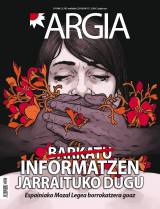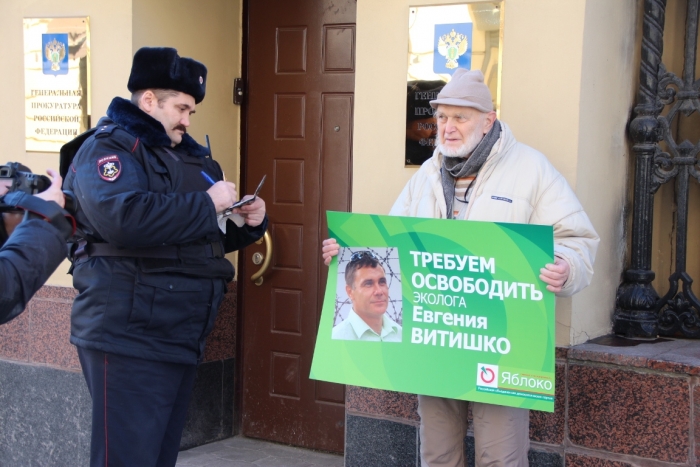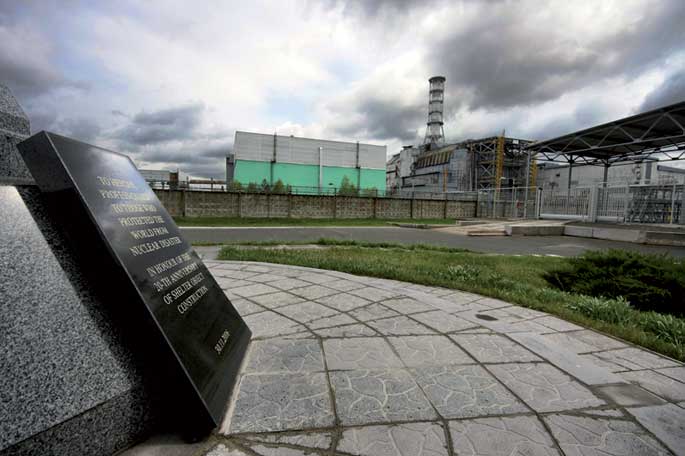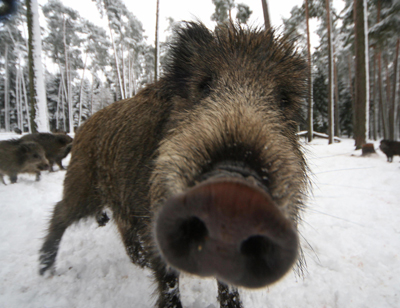In Ukraine and Belarus, children know what happened in Chernobyl.
- On 26 April, 30 years have passed since the outbreak of the Chernobyl nuclear power plant, the largest man-made industrial disaster in northern Ukraine, on the border with Belarus. Three decades later, many European citizens continue to suffer the damage from the radioactive contamination they suffer in their bodies. Chancellors are often mentioned, but perhaps the diseases and breakdowns that many children produce at birth are even more terrible.
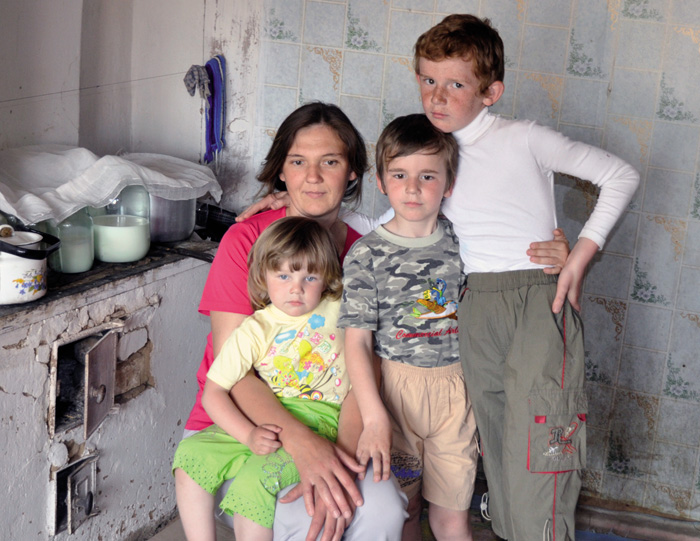
On 26 April 1986 the myth of safe nuclear energy ended with the disaster at the Chernobyl nuclear power plant. 30 years later, between 26 and 28 February 2016, the International Association of Doctors for the Prevention of Nuclear War (IPPNW) in Berlin held the conference “5 years living with Fukushima - 30 years living with Chernobyl” to analyze how people affected by the consequences of Chernobyl live.
In addition to the experts of the then Soviet Union, Japan, the United States and Germany, they also approached more from all over the world to the headquarters of the Urania science society in Berlin.
In the presentation paper, British radiobiologist physician Ian Fairlie summarized the recently published dossier “The Other Report On Chernobyl” commissioned by the Friends of the Earth of Austria and the City Hall of Vienna.
Five million people today live in the most polluted regions of Belarus, Ukraine and Russia, where more millions of people live. Almost a quarter of Belarus’s total area is heavily contaminated, 22%, 13% in Austria, 6.3% in Ukraine, 5.6% in Finland, 5.4% in Sweden…
In 1986, radioactivity spread almost across Europe, with 400 million people living in less polluted areas. Do not just look at Belarus and Ukraine, where 42% of the Western European lands are more or less polluted, where 37% of the radioactive rain from Chernobyl fell. Dr Fairlie has shown a striking map, commissioned by the European Commission in 1998 but concealed today by some of the major international organisations, which shows how far Cesio's radioactivity was carried in May 1986, even leaving the poison areas far from Chernobyl: Scotland, Norway, Sweden, Finland, Italy, Alps, Balkans, slave countries…
Fairlie's estimates indicate that about 40,000 deaths from cancer are expected. As for thyroid cancer, there have been 6,000 deaths so far and 16,000 more are expected. Currently, Austria has demonstrated the proliferation of thyroid cancer by radiation, as well as the proliferation of leukaemias, cardiovascular diseases and breast cancers by the same contamination.
Over the years, new tests have been carried out for congenital defects, including Down syndrome, mental illness, diabetes and other diseases affecting many boys and girls due to radioactivity.
The Berlin Congress was attended by specialist doctors who attend to the health of the citizens of the most affected areas. From Belarus, Sergey Stanislavovich Korsa, a doctor and director of the provincial polyclinic, announced the health status of the inhabitants of the Buda-Koxelevo region. Buda-Koxelevon, 250 kilometres from Chernobyl, has 31,771 inhabitants, all of them in a heavily polluted territory, where many adults participated in cleaning as liquidators after the accident.
In Stanislavovich’s words, “it is enough to look at the region’s medical and demographic statistics to realize that the health of its people is going to get worse each year.” In other words, using the words of the writer Adam Abramovich, unfortunately Txernobyl is not a question of the past but of the future. She particularly highlighted the problems that women have experienced during pregnancy and those that children bring at birth. Congenital diseases are becoming more frequent: problems with chromosomes, Down, cystic fibrosis…
Surviving in hell
Physician and genetic expert Wladimir Wertelecki has analysed the proliferation of congenital malformations of newborns in northern Rivne province in Ukraine, in part of the region of Polesia.El atomic accident of 1986 is the most polluted area in Ukraine, more poisoned than the neighbouring country of Chernobyl itself.
Since 1996, it has a large research team made up of anthropologists, mathematicians, statisticians, nutritionists, psychologists, etc. Although radiation – pollution in general – is always taken care of in cinemas, the congenital malformations of newborns studying teratology are of equal importance to them. This corner of Polesia is a laboratory of damage to radioactivity: the inhabitants live very isolated, so they must eat poisoned food produced in them, cooked in the fires of irradiated wood.
Rivne-Polesia is a sad champion of Europe in three diseases among newborns: spinal cord tube malformations, microcephaly (head too small) and microphthalmia (eyes too small). Researching their causes, discarding other possible causes and tracking radioactivity, it has been found today that in Rivne-Polisian contamination is greater than 15 years ago, as it is being concentrated year after year.
But by chance, they've found strontium in large numbers. “Everyone looks at the grass,” says Werteleck, but strontium is much more dangerous than is believed, the child will be placed on the skeleton and on the molars for life, he will not flush it out with urine as cesium.” One of the problems of the doctors who have followed all the children of the region in the last ten years is that very little research has been done on the sensitivity of the human fetus to strontium worldwide. The health authorities, for their part, have not paid any particular attention to the case either. What can be deduced from the data held by them?
Weterlecki sees only three opportunities. Or this proliferation of malformations is not due to irradiations, but then the authorities must offer a different coherent explanation. Or, two, the fetus is much more sensitive to irradiation than it was thought. Or, three, the amounts of irradiation there are far greater than those declared by the authorities.
Weterlecki dedicates his lecture to a boy from Rivne-Polesia. The newborn was abandoned because they had not even been taught to his mother: “You gave birth to a monster who was born dead. Go home, forget it and try again.” The mother fled Ukraine completely destroyed. Without a leg, neither sex, nor the ovary, nor the uterus, but that little orphan, with great joy of life, was taken by doctors to their amatxu, who found him in the asylum, and returned to his mother. Today, she studies at some university in Western Europe. Fortunately, radioactivity caused early damage to her early gestation and did not damage her brain, allowing her to regenerate her.
Weterlecki was fired with applause when he delivered his speech: “The most important thing for doctors is not epidemiology, but prevention. And we know how to prevent it. We must act immediately.”
Errusiako armadak Txernobylgo zentral nuklearraren eremua kontrolpean du. Hala adierazi du ostiral goizean Errusiako Defentsa Ministroak.
Three Mile Island zentraleko istripu nuklearraren 38. urteurrena bete da, AEBetako historiako larriena, eta munduko hirugarrena. Zentralak ihes bat izan zuen eta substantzia erradioaktiboz betetako burbuila bat zabaldu zen zentraletik kanpo. Harrisburgen irakaspena, baina, ez... [+]
"Energia nuklearra deskonektatu" boikot kanpaina abiatu du Ekologistak Martxan taldeak Espainiako Estatuan, Txernobylgo istripua gertatu zenetik 30 urte pasa direnean.
24 erakundek (alderdi politikoak, sindikatuak, talde ekologistak...) eta bederatzi norbanakok Garoñako berriro irekitzearen aurkako manifestua aurkeztu dute Bilbon egindako ekitaldian. Adierazi dutenez, zentral nuklearra berriro martxan hasiko balitz Iberdrola eta... [+]
Apirilaren 26an 29 urte bete ziren Txernobyleko zentral nuklearra lehertu zenetik. Leherketaren ondorioz material erradioaktibo ugari barreiatu zen munduan zehar. Ukrainan bertan, erradioaktibitatea ez zen uniformeki barreiatu, gune batzuetan asko eta besteetan gutxi... [+]
Ukrainako zentral nuklearraren laugarren erreaktorearen sarkofagoari eusten zion eraikin bateko hormen eta sabaiaren zati bat puskatu egin dira, asteazkenean Pravda egunkariak argitaratu zuenez.
Txernobylgo zentral nuklearrak eztanda egin eta 26 urtera, 1.500 kilometro urrunago Alemaniako Bavarian basurdeek zesiuma metatzen dute beren okeletan. Hori dela eta, ehiztari bavariarrek basurde hilak analizatzera eraman behar izaten dituzte gobernuak baimendutako 70 kontrol... [+]









